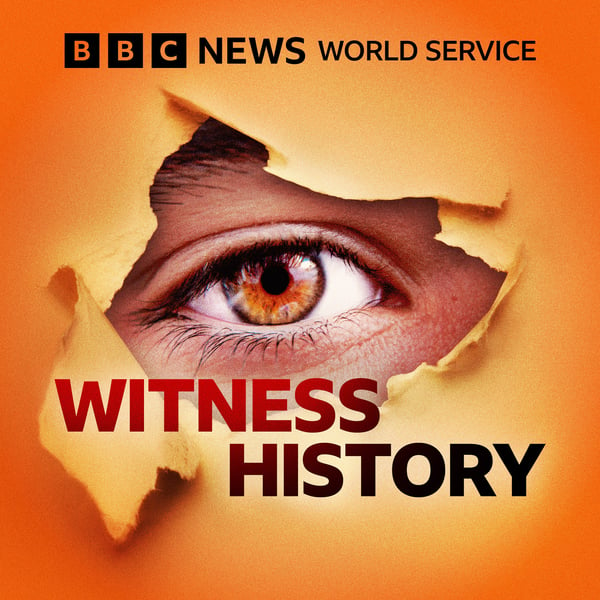The invention of Kevlar
Witness History
BBC
4.4 • 1.6K Ratings
🗓️ 24 July 2025
⏱️ 11 minutes
🧾️ Download transcript
Summary
In 1965, a new fibre was discovered by Polish American scientist Stephanie Kwolek. It was called Kevlar and it was found to be five times stronger than steel.
Since that discovery it’s been used to save thousands of lives through its use in bulletproof vests, but it’s also used in hundreds of other products from aeroplanes to protective clothing for motorcyclists.
Stephanie was one of the only female scientists working for the chemical firm DuPont and was passionate about encouraging more women and girls into the field of chemistry.
Tim O’Callaghan has uses archive of Stephanie Kwolek from 1996 to tell the story of her discovery.
Eye-witness accounts brought to life by archive. Witness History is for those fascinated by the past. We take you to the events that have shaped our world through the eyes of the people who were there. For nine minutes every day, we take you back in time and all over the world, to examine wars, coups, scientific discoveries, cultural moments and much more.
Recent episodes explore everything from football in Brazil, the history of the ‘Indian Titanic’ and the invention of air fryers, to Public Enemy’s Fight The Power, subway art and the political crisis in Georgia. We look at the lives of some of the most famous leaders, artists, scientists and personalities in history, including: visionary architect Antoni Gaudi and the design of the Sagrada Familia; Michael Jordan and his bespoke Nike trainers; Princess Diana at the Taj Mahal; and Görel Hanser, manager of legendary Swedish pop band Abba on the influence they’ve had on the music industry. You can learn all about fascinating and surprising stories, such as the time an Iraqi journalist hurled his shoes at the President of the United States in protest of America’s occupation of Iraq; the creation of the Hollywood commercial that changed advertising forever; and the ascent of the first Aboriginal MP.
(Photo: Stephanie with items which use Kevlar. Credit: Smithsonian Institute)
Transcript
Click on a timestamp to play from that location
| 0:00.0 | I'm Mariana Spring, the BBC's social media investigations correspondent. |
| 0:06.3 | In my podcast, I've been investigating what happened to the daughter of a conspiracy theorist |
| 0:10.9 | who died having rejected chemotherapy. |
| 0:13.5 | It would mean the world to me if I could make it that she wasn't just another in the long line of people that die in this way. |
| 0:18.9 | How does this reflect the rise of health conspiracy theories on social media and beyond? |
| 0:24.8 | The new series of Mariana in Conspiracy Land. |
| 0:27.8 | Listen on BBC Sounds. |
| 0:34.7 | Hello, you're listening to the Witness History podcast from the BBC World Service with me, Tim O'Callaghan. |
| 0:41.2 | We're the daily program that takes you back to moments in history around the world with the people who were there. |
| 0:47.0 | So if that sounds like something that should be part of your daily routine, |
| 0:50.6 | make sure you subscribe and turn on your push notifications for wherever you get your BBC podcasts, |
| 0:56.5 | so you never miss an episode. In 1965, a Polish-American scientist called Stephanie Kowleck |
| 1:03.1 | created a new fibre that was five times stronger than steel called Kevlar. It's used in hundreds |
| 1:09.4 | of products, but arguably the most important |
| 1:12.1 | one is this. |
| 1:13.1 | This jacket that I'm wearing holds the key to survival from any number of attacks from |
| 1:17.9 | that weapon. It's lined with a special material made from this stuff. It's called Kevlar. |
| 1:24.1 | A man-made fibre developed some years ago, which in its raw state is so silky soft that you can just push your finger straight through it. |
| 1:33.3 | Bulletproof vests from across the world worn by soldiers, police officers and journalists used Kevlar. |
| 1:39.4 | But it wasn't the type of life-saving that Stephanie had originally been interested in. |
| 1:45.5 | When I was in high school, I became interested in medicine and in a career in chemistry. |
| 1:54.7 | Now, my father died when I was 10 years old, so I didn't have the money to go directly to medical school, |
... |
Transcript will be available on the free plan in 20 days. Upgrade to see the full transcript now.
Disclaimer: The podcast and artwork embedded on this page are from BBC, and are the property of its owner and not affiliated with or endorsed by Tapesearch.
Generated transcripts are the property of BBC and are distributed freely under the Fair Use doctrine. Transcripts generated by Tapesearch are not guaranteed to be accurate.
Copyright © Tapesearch 2025.

